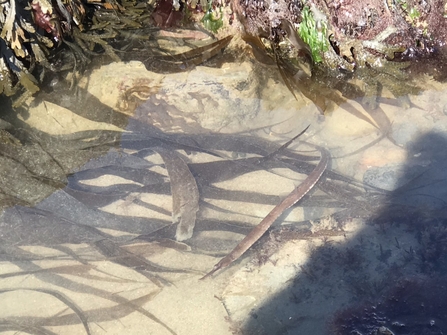Number of volunteers overall – 7
Number of quadrats sampled – 13xMidshore 9xlowshore
Time spent in timed species searches – 15x10minutes
Seasonal findings – we’re finding eggs on the shore much more now and actually, as well as finding them ourselves, we’ve heard reports from across the west coast shores of netted dog whelk eggs (Tritia reticulata) being found on all sorts (algae, shark eggcases etc). Has this been a bumper breeding year for these mottled brown and orange molluscs?










